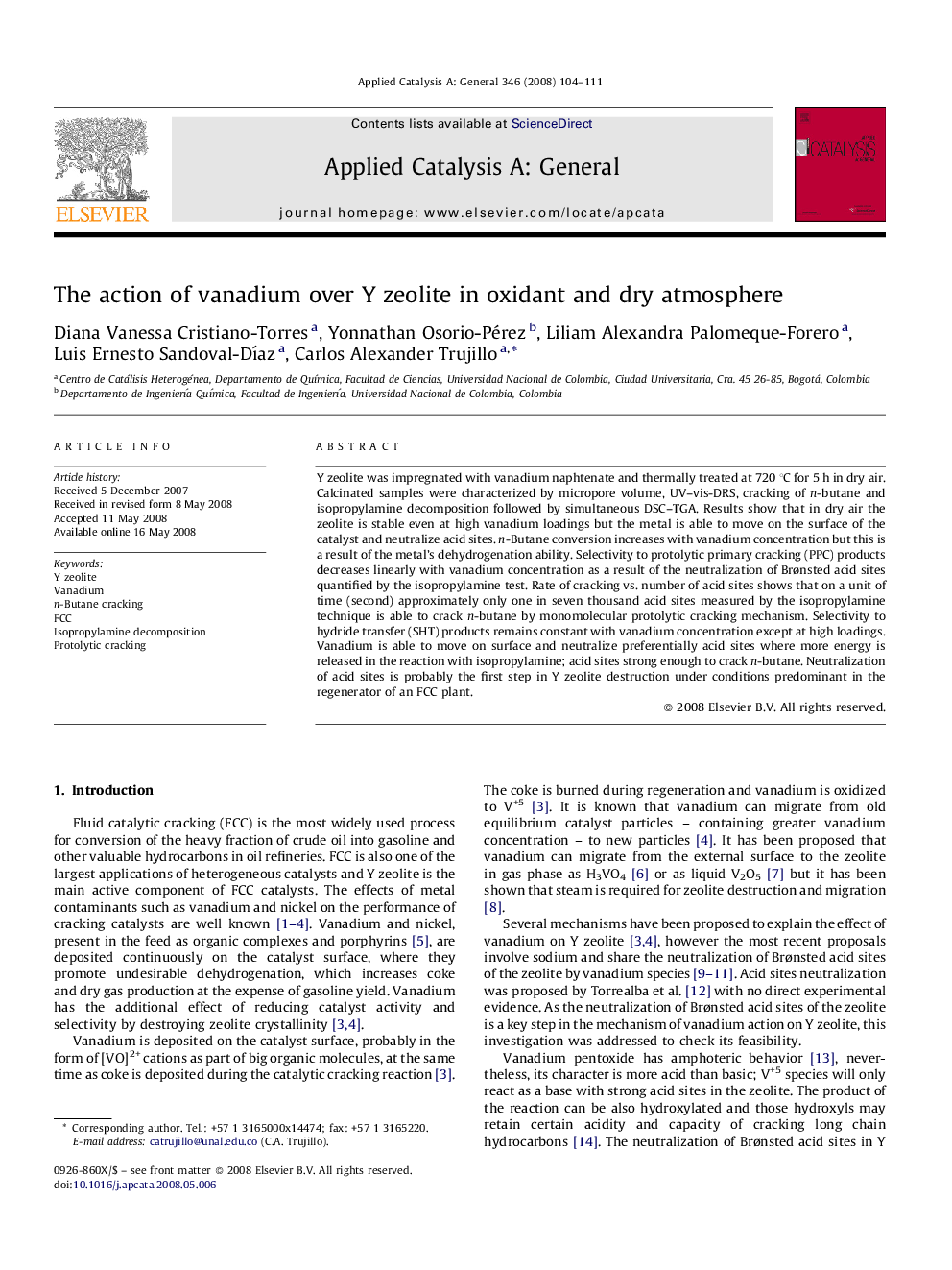| کد مقاله | کد نشریه | سال انتشار | مقاله انگلیسی | نسخه تمام متن |
|---|---|---|---|---|
| 42991 | 45950 | 2008 | 8 صفحه PDF | دانلود رایگان |

Y zeolite was impregnated with vanadium naphtenate and thermally treated at 720 °C for 5 h in dry air. Calcinated samples were characterized by micropore volume, UV–vis-DRS, cracking of n-butane and isopropylamine decomposition followed by simultaneous DSC–TGA. Results show that in dry air the zeolite is stable even at high vanadium loadings but the metal is able to move on the surface of the catalyst and neutralize acid sites. n-Butane conversion increases with vanadium concentration but this is a result of the metal's dehydrogenation ability. Selectivity to protolytic primary cracking (PPC) products decreases linearly with vanadium concentration as a result of the neutralization of Brønsted acid sites quantified by the isopropylamine test. Rate of cracking vs. number of acid sites shows that on a unit of time (second) approximately only one in seven thousand acid sites measured by the isopropylamine technique is able to crack n-butane by monomolecular protolytic cracking mechanism. Selectivity to hydride transfer (SHT) products remains constant with vanadium concentration except at high loadings. Vanadium is able to move on surface and neutralize preferentially acid sites where more energy is released in the reaction with isopropylamine; acid sites strong enough to crack n-butane. Neutralization of acid sites is probably the first step in Y zeolite destruction under conditions predominant in the regenerator of an FCC plant.
Y zeolite was impregnated with vanadium naphtenate and thermally treated at 720 °C for 5 h in dry air. Calcinated samples were characterized by micropore volume, UV–vis-DRS, cracking of n-butane and isopropylamine decomposition followed by simultaneous DSC–TGA. Results show that in dry air the zeolite is stable even at high vanadium loadings but the metal is able to move on the surface of the catalyst and neutralize acid sites. n-Butane conversion increases with vanadium concentration but this is a result of the metal's dehydrogenation ability. Selectivity to protolytic primary cracking products decreases linearly with vanadium concentration as a result of the neutralization of Brønsted acid sites quantified by the isopropylamine test. Rate of cracking vs. number of acid sites shows that on a unit of time (second) approximately only one in seven thousand acid sites measured by the isopropylamine technique is able to crack n-butane by monomolecular protolytic cracking mechanism. Selectivity to hydride transfer products remains constant with vanadium concentration except at high loadings. Vanadium is able to move on surface and neutralize preferentially acid sites where more energy is released in the reaction with isopropylamine; acid sites strong enough to crack n-butane. Neutralization of acid sites is probably the first step in Y zeolite destruction under conditions predominant in the regenerator of an FCC plant.Pictogram: This drawing represents the possible neutralization of Y zeolite Brønsted acid sites by vanadium species. Figure optionsDownload as PowerPoint slide
Journal: Applied Catalysis A: General - Volume 346, Issues 1–2, 31 August 2008, Pages 104–111